Books
Books
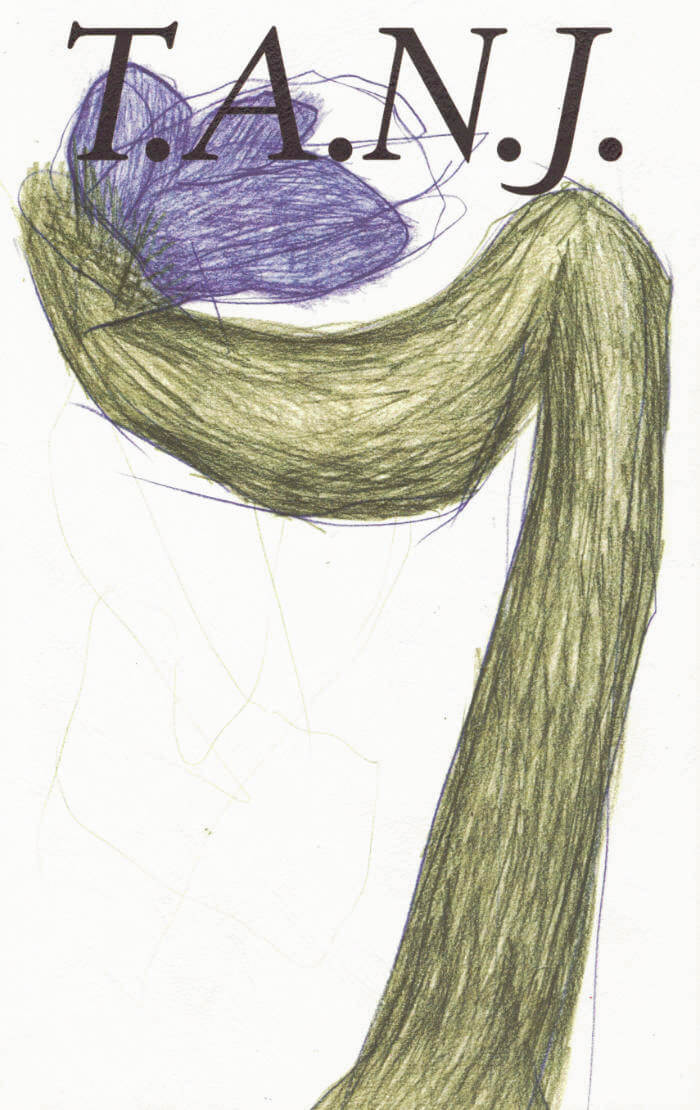
The Against Nature Journal #3
Aimar Arriola, Grégory Castéra
This third issue reviews the many ways in which medicine has pathologized non-procreative sexual desire— those bodies that challenge gender binaries or expose different abilities—while imagining other ways of collectively well-being.
"The issue opens with a commissioned work by visual artists CANDICE LIN and P. STAFF that evokes the central concerns of the journal in subtle and unexpected ways. Lambda Literary Award–winner INDRAPRAMIT DAS speculates on other forms of kinship in a new science-fiction story, while a transnational questionnaire offers insights into the continuous fight for reproductive justice.
We republish a chapter from the autobiography of the late South African, trans, traditional healer NKUNZI ZANDILE NKABINDE, which is introduced by RUTH MORGAN.
We continue to honor the power of poetry with works by ROSA CHÁVEZ and STELLA NYANZI, while celebrating the energy of collective action with a piece by WHAT WOULD AN HIV DOULA DO? In anticipation to his new book on queer desire in the Caribbean, scholar ANDIL GOSINE shares a previous article addressing the notion of “against nature,” while our Columns section brings news from Brazil, India, Kenya, Lebanon, Malaysia, Morocco, and the UK during a season of pandemic fatigue, but also care work, organization, and hope." — the editors

The Essential June Jordan
The Essential June Jordan honors the enduring legacy of a poet fiercely dedicated to building a better world. In this definitive volume, featuring an afterword by Pulitzer Prize-winner Jericho Brown, June Jordan’s generous body of poetry is distilled and curated to represent the very best of her works.
Written over the span of several decades―from Some Changes in 1971 to Last Poems in 2001―Jordan’s poems are at once of their era and tragically current, with subject matter including racist police brutality, violence against women, and the opportunity for global solidarity amongst people who are marginalized or outside of the norm. In these poems of great immediacy and radical kindness, humor and embodied candor, readers will (re)discover a voice that has inspired generations of contemporary poets to write their truths. June Jordan is a powerful voice of the time-honored movement for justice, a poet for the ages.

Side Magazine #01 – The Professor
The first issue of the editorial discursive space for the Bergen Assembly triennial, conceived by Saâdane Afif, explores the identity, role and position of the Professor.
Side Magazine is conceived as a site of research for the fourth edition of Bergen Assembly convened by Saâdane Afif. Yasmine d'O., who has been invited as curator of the upcoming edition, will be the executive editor.
Side Magazine is dedicated to the seven characters in The Heptahedron, a play written by the French poet, essayist, and scholar Thomas Clerc in 2016. In order of apparition these characters are the Professor, the Moped Rider, the Bonimenteur, the Fortune Teller, an Acrobats, the Coalman, and the Tourist.
The first issue of Side Magazine is dedicated to the figure of the Professor. It features seven articles, each of which explores the identity, role, and position of the Professor. Contributors include Uli Aigner, Lili Reynaud-Dewar, Jörg Heiser, Christian Nyampeta, Marjorie Senechal, and Vivian Slee.
Seven issues of Side Magazine will be released in the run up to the opening of Bergen Assembly 2022, opening September 8. A special eighth issue will be published after the opening days. This, combined with the existing seven issues as a collection, constitute the exhibition catalogue and guide.
Saâdane Afif (born 1970 in Vendôme, France) creates installations made up of unexpected encounters between objects. These creations, of uncertain status, oscillate between function and symbol, between art and design, and provoke shifts of meaning that engage a reflection on today's industrial society.

Contre-vents – Colères, espoirs, écologies et politiques dans l'Ouest de la France
François Piron, Guillaume Désanges
A documentary and speculative publication on a genealogy of political, social, ecological and identity-based struggles in the Brittany region and the West of France, from the 1960s to the Zone to Defend of today, based on numerous documents and films made by filmmakers and collectives.
Published following the eponymous exhibition at Grand Café, Saint-Nazaire, in 2019.
Texts by Isabelle Cambourakis, Jade Lindgaard, Élise Roullaud; interviews with Jean-Louis Le Tacon, Patrick Prado, Joseph Potiron, Olivier Tric.
Graphic design: Laure Giletti & Grégory Dapra.
published in September 2021
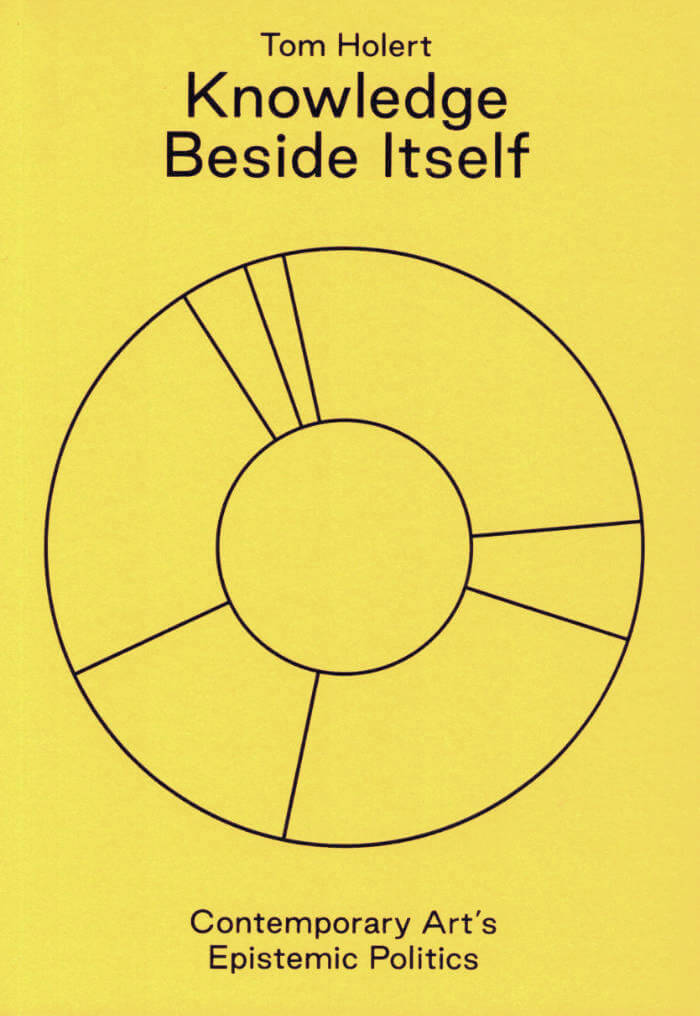
Knowledge Beside Itself – Contemporary Art's Epistemic Politics
A study on the role of research and knowledge production in today's contemporary art, and the growing relevance of art as conduit of knowledge.
What is the role and function of contemporary art in economic and politicalsystems that increasingly manage data and affect? Knowledge Beside Itself delves into the peculiar emphasis placed in recent years, curatorially and institutionally, on notions such as “research” and “knowledge production.” Considered as a specific, expansive mode of the culture industry, contemporary art is viewed here as a strategic bet on the social distinctions and value extractions made possible by claiming a different, novel access to “knowledge.” Contemporary art's various liaisons with the humanities and the social and natural sciences, as well as its practitioners' frequent embeddedness within transdisciplinary research environments and educational settings, have created a sense of epistemo-aesthetic departure, which concurs with the growing relevance of art as conduit or catalyst of knowledge.
Discussing the practice of artists such as Christine Borland, Tony Chakar, Natascha Sadr Haghighian, Adelita Husni-Bey, Jakob Jakobsen, Claire Pentecost, and Pilvi Takala, writer and curator Tom Holert submits the gambit of conceptualizing contemporary art as an agent of epistemic politics to a genealogical analysis of its political-economic underpinnings in these times of cognitive capitalism, machine learning, and a renewed urgency of epistemological disobedience.
Tom Holert is a writer and curator. In 2015 he cofounded the Harun Farocki Institut in Berlin, a platform for research and production departing from the example set by Farocki. With Anselm Franke he curated the 2018 exhibition “Neolithic Childhood: Art in a False Present, c. 1930” at Haus der Kulturen der Welt, Berlin.

Diaries and Dreams – 1976-1979
Second volume of Ion Grigorescu's translated diaries, assembled like a small literary and art-historical sensation of the period between 1976 and 1979.
In recent years, the work of Ion Grigorescu, one of the seminal Eastern European visual artists of his generation, has attracted increasing attention in the West. This volume is the second of his translated diaries—the first from 1970 to 1975 was published in 2014 by Sternberg Press—and is assembled like a small literary and art-historical sensation of the period between 1976 and 1979. It not only counters the facile reading of Grigorescu's practice in the context of Conceptual art and performance art, but provides insight into the artist's multifocal thinking, which incorporates an original critique of modernism, the dystopian effects of an instrumentalized idea of reason and rationality, an analysis of subjectivity, and a penetrating gaze into a dialectic of secrecy and elucidation, of exposure and mystification.
Grigorescu's diaries are written notes revolving around the status of the image and investigate the relation of the body to society and of art to the world through a phenomenological approach. His work proposes a parallel conception of the public made tangible through the eloquence of the body.
In poetic language full of powerfully pictorial metaphors, Grigorescu's reflects on the tension between the realistic effects of the image, the suppression of realism, and the hidden traces the gaze holds through the activities of the increasingly present unconscious of collective memory. Along with the drawings, paintings, photographs, and sketches that accompany them, the diaries serve as an introduction that open the possibility of conceiving Grigorescu's art as a rare evocation of a singular way of thinking: a stance.
Ion Grigorescu (born 1945, lives and works in Bucarest) is one of the most emblematic artistic personalities of the post-war period in Romania, a key figure of conceptual artin Eastern Europe.
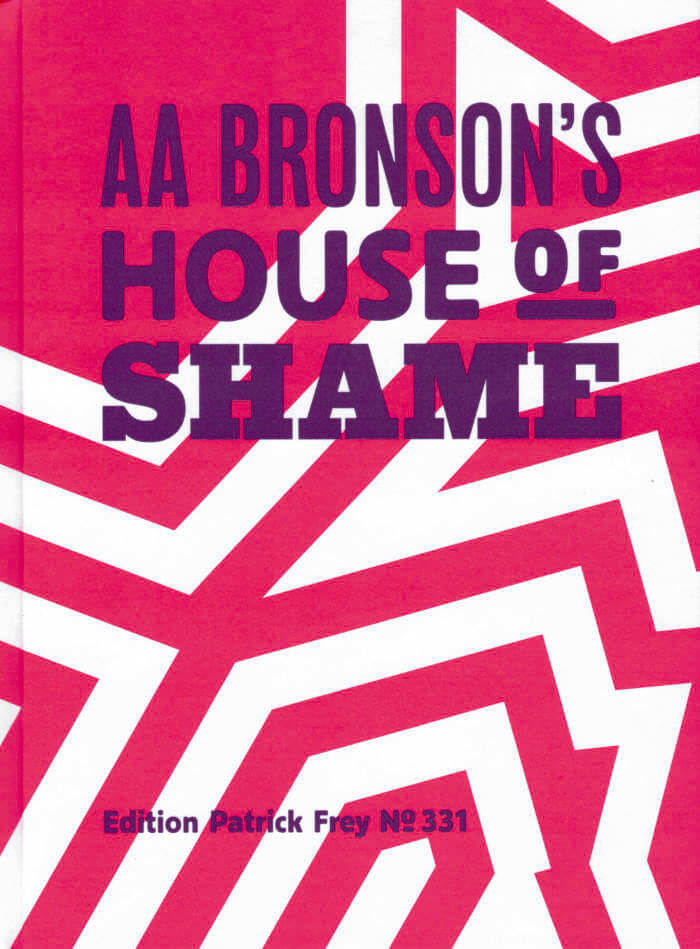
AA Bronson's House of Shame
A look back in text and images at AA Bronson 's (collective) production between 2013 and 2018.
A nocturnal secret ritual performed by two naked men in a hotel room in the Netherlands; a woven tent where the artist dressed as a mage encounters visitors to share their traumas; buttplugs adorned with rooster feathers; a collection of queer zines; anal-sprayed tartan paintings; a zen garden of mugwort. A few of the singular artistic gestures AA Bronson committed in the last few years are united in this book.
After his General Idea partners, Felix Partz and Jorge Zontal, passed away in 1994, AA Bronson had to learn how to keep on living by himself, inventing a personal identity without his former companions, creating a new community of work, friendship and love. These issues have been at the core of his art in the last 25 years. He has developed a work where collaboration with other artists, especially younger queer artists, and creation of a social bond are central.
AA Bronson's House of Shame aims to emphasize this social dimension in his work through an overview of a series of exhibitions he made between 2013 and 2018. These are shows that bring together a community of artists; shows where performances and rituals, often invisible, contribute to the creation of a shared experience; a unique blend of art, friendship, collaboration, spirituality and humour.
The book is in two-parts. An initial monographic section, which includes an essay and an interview with the artist, brings together the works and the exhibitions. In the second, choral part, friends have been invited to bear witness and write a sort of 'journal de bord,' telling the tale of five years of the artist's community life.
With a foreword by Vincent Simon, a text by Paul Clinton, and an interview by Frédéric Bonnet, and contributions from Philip Aarons, Defne Ayas, Elijah Burger, Matthias Herrmann, Richard John Jones, Bradford Kessler, Terence Koh, Sholem Krishtalka, Mark Jan Krayenhoff van de Leur, Gareth Long, Chrysanne Stathacos, Scott Treleaven, and Louwrien Wijers.

Hooker's Green Lake
A series of recent drawings by London-based artist Faye Wei Wei.
Faye Wei Wei (born 1994) is a British artist. She has had solo shows at Project Room, Galerie Kandlhofer, Vienna (2020), Cob Gallery, London (2019), SADE Gallery, Los Angeles (2018), Centre For Chinese Contemporary Art, Manchester (2018)... She graduated from the Slade School of Fine Art in 2016. She lives and works in London.
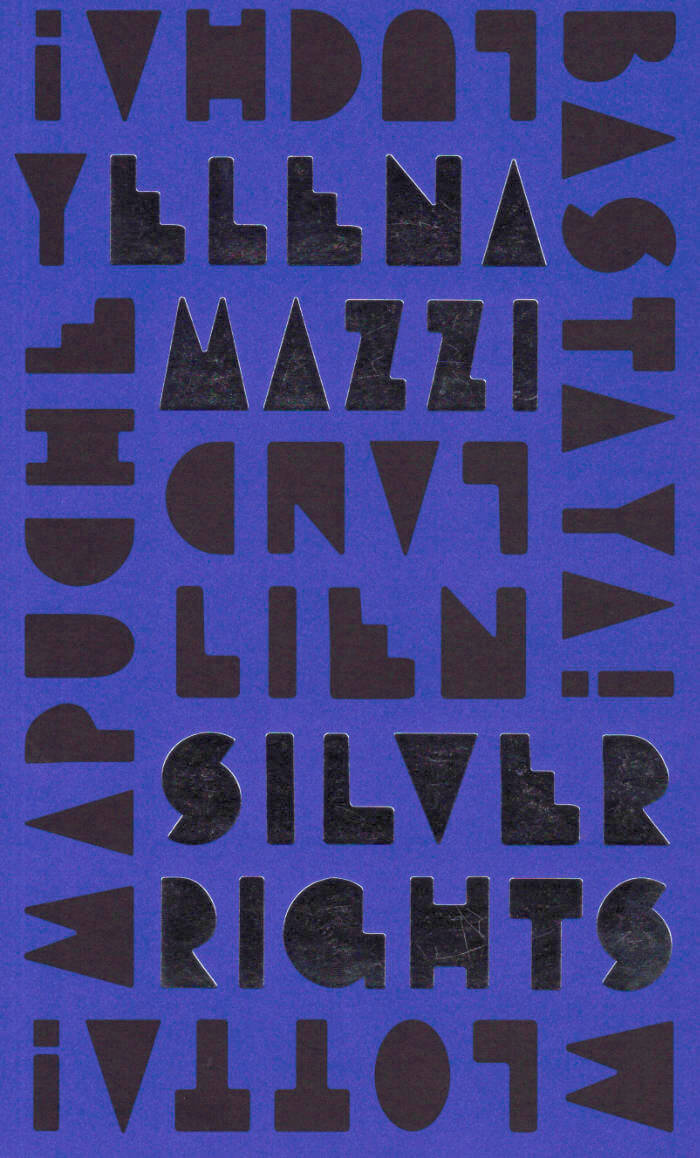
Silver Rights
An in-depth research project by Elena Mazzi in dialogue with the Mapuche spiritual leader, silversmith and activist, Mauro Millán and Argentinean artist, Eduardo Molinari, about the cultural resistance of the Mapuche people to neo-colonialism in Chile.
Curated by Emanuele Guidi, is promoted by ar/ge kunst Bolzano, and supported by the Italian Council (7th Edition, 2019)–Directorate-General for Contemporary Creativity of the Italian Ministry of Culture, Silver Rights focuses on the ancestral bond between the communities and the land (mapu), a bond eroded and denied by colonising forces that have mutated over the centuries to gradually establish themselves in recent decades through neo-extractivist practices; a settlement process resulting from the convergence of investment policies and commercial agreements between South American governments and foreign multinationals, including the Italian Benetton.
More specifically, the project responds to the narrative proposed by the Leleque Museum, an anthropological museum opened in 2000 in the very lands owned by Benetton; an ambiguous operation that dismisses the Mapuche people as an extinct culture rather than one that is alive and active in the disputed territory, 'musealising' their memory and material culture. Elena Mazzi addresses this complexity by engaging in dialogue with the dense network of relations that the Mapuche community has been consciously weaving for years; a way of understanding the art of diplomacy that, on the one hand, implies building and maintaining international relations between different political and cultural subjects, and, on the other, is implemented in their cosmovisions as a form of radical mediation between land, human and 'more than human' beings.
Contributions by Leandro Martínez Depietri, Riccardo Bottazzo, Enrica Camporesi, Emanuele Guidi, Elena Mazzi, Mauro Millán, Eduardo Molinari, Ana Margarita Ramos, Ya Basta! Êdî Bese!
published in September 2021
trilingual edition (English / Spanish / Italian)

Cruiser L'Utopie
First French translation of José Esteban Muñoz's field defining work—an intellectual inspiration for a generation of LGBTQ scholars.
Cruiser l'utopie describes a movement, a drifting advance between theory, philosophy, art criticism and personal narrative. The works cited, narrated, are mixed with family or individual narrative and more academic considerations. This practice of queer theory and aesthetics is part of a new interpretation of hope as perceived by philosopher Ernst Bloch, articulated with black radical thought and the poetic research of authors such as Fred Moten and Eileen Myles.
Muñoz focuses here on the period of the Stonewall revolts (New York, 1969) and analyzes, for example, the works of Frank O'Hara, King Jone/Amiri Baraka, Andy Warhol, Kevin Avance, Samuel R. Delany, Fred Herko, Jill Johnston, Ray Johnson. Queer theory as a study has a new way of researching and writing, a form of hybridity between philosophy and cultural studies. The critique is, as if by anticipation, contained in the counter-normative artistic practice and daily life whose narratives, both subjective and historical, hint at a queer future, a place of transformation and liberation.
The text, translated from English by Alice Wambergue, is accompanied by a preface by Elisabeth Lebovici and a poem by Fred Moten.
José Esteban Muñoz (1967 - 2013) is a queer scholar and art theorist. Author of The Sense of Brown (published posthumously in 2020), Cruising Utopia, the Aftermath and Elsewhere of Queer Advent (2009), and Disidentifications: Queers of Color and the Performance of Politics (1999), he edited the collective works Pop Out: Queer Warhol (1996) and Everynight Life: Culture and Dance in Latin/o America (1997). Muñoz has long taught in the Department of Performance Studies at New York University's Tisch School of the Arts and edited the Sexual Cultures series at New University Press, where he has published works such as Jack Halberstam and Samuel Delany.
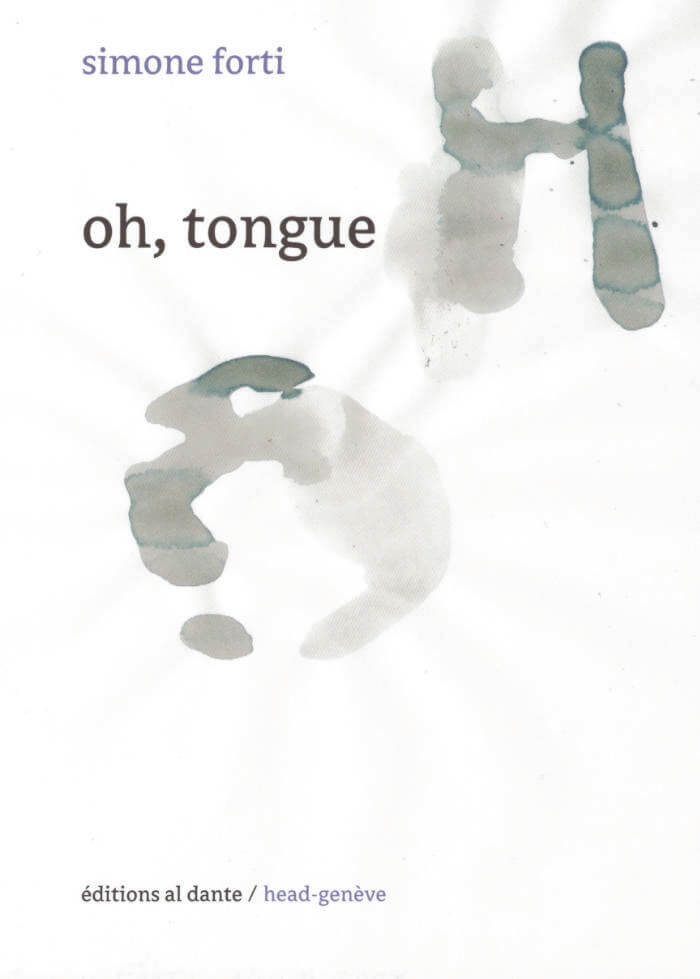
oh, tongue
The notebook of American dancer and choreographer Simone Forti, in which she shares her poetry as well as her thoughts on dance, the body, writing, the state of the world… The publication includes an interview with Forti by Annie Suquet, and an afterword by poet and Fluxus artist Jakson Mac Low.
American dancer and choreographer Simone Forti (born 1935 in Florence, Italy) has been a leading figure in the development of contemporary performance over more than fifty years. Artist, choreographer, dancer, writer, Forti has dedicated herself to the research of a kinesthetic awareness, always engaging with experimentation and improvisation. Investigating the relationship between object and body, through animal studies, news animations and land portraits, she reconfigured the concept of performance and dance.
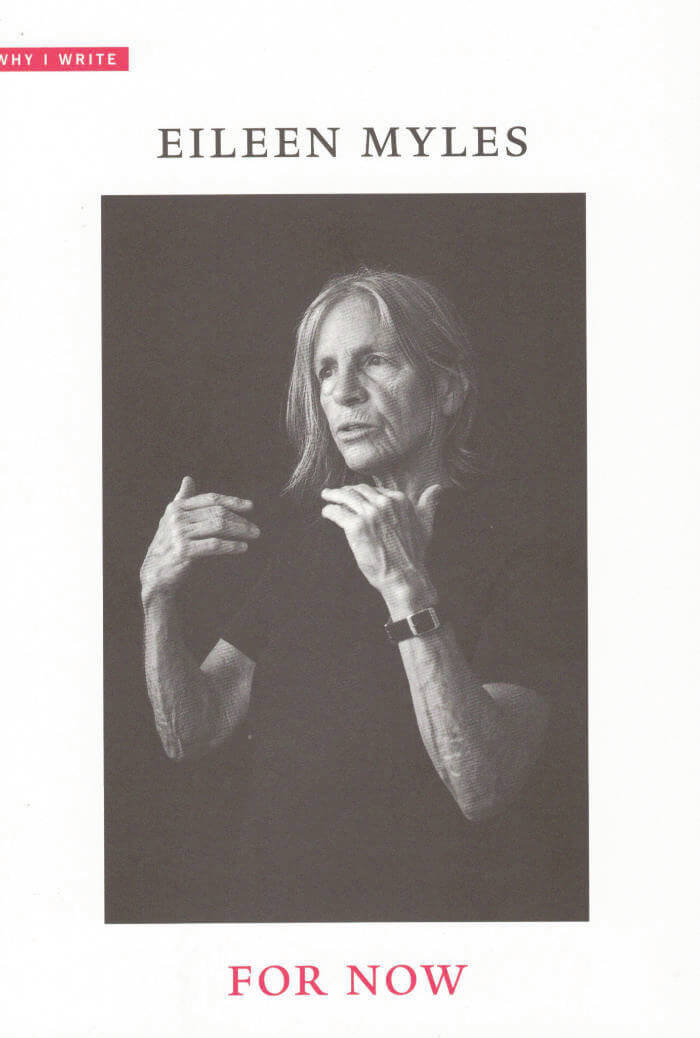
For Now (paperback)
In this third Why I Write volume, Eileen Myles addresses the social, political, and aesthetic conditions that shape their work.
In this raucous meditation, Eileen Myles offers an intimate glimpse into creativity's immediacy. With erudition and wit, Myles recounts their early years as an awakening writer; existential struggles with landlords; storied moments with neighbors, friends, and lovers; and the textures and identities of cities and the country that reveal the nature of writing as presence in time.
For Myles, time's "optic quality" is what enables writing in the first place, as attention, as devotion, as excess. It is this chronologized vision that enables the writer to love the world as it presently is, lending love a linguistic permanence amid social and political systems that threaten to eradicate it. Irreverent, generous, and always insightful, For Now is a candid record of the creative process from one of our most beloved artists.
Paperback edition - 2021.

TRANSMISSION – CENSORED 05
Dans ce numéro, Censored explore les parcours de militant·es d’hier et d’aujourd’hui qui ont marqué l’histoire, l’enjeu politique des archives, ou encore la traduction féministe. Il aborde les influences entre l’art et les années sida, le traumatisme racial comme un enjeu de santé publique, la transmission intergénérationnelle avec des textes intimes. Censored s’est aussi intéressé à l’hétérosexualité comme système politique et à la déconstruction de la famille nucléaire.
Ce nouveau numéro présente une grande nouveauté, des cartes blanches à cinq artistes: Naïa Combary, Clara Pacotte et Charlotte Houette (EAAPES), Camille Soulat, Roxanne Maillet, Tabita Rezaire.

Tense
Tense is a never-realised publication, written and composed by Lucy Lippard and Jerry Kearns in 1984, that only now has been released in a very limited run on our imprint. The book accompanied the exhibition Top Stories, which took a closer look at the 29 issues of the prose periodical with the same title, founded in the late 1970s by Anne Turyn. Top Stories was dedicated to fiction by emerging women artists and writers from that time. Tense was originally intended to become part of the series as well, but never made it to print. It was only recently – during the making of the exhibition at Amsterdam’s Kunstverein – that the original mock-up was retrieved from the editor’s archives and finally sent off to the printer.
40 p, ills colour & bw, 13 x 21 cm, pb, English
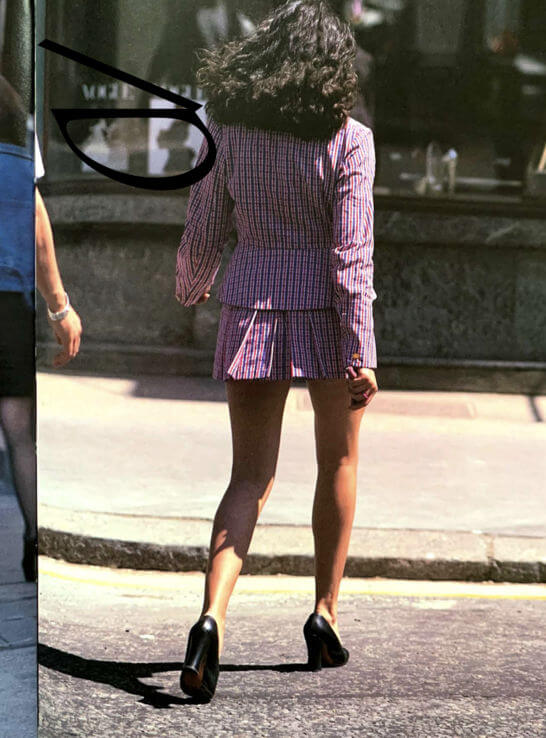
Bill Magazine 3
BILL 3 a special archival issue, features unpublished Martin Margiela lookbook photographs, a horse, street style from the 90’s, vases of Japan, a silver story, a flash forward and back, tennis, an icecube tray, more Margiela, Hysteric Glamour and a bunch of frivilous images.
The stories are sourced from the book collections of RareBooksParis and Julie Peeters.
Printed in 2020, bound in 2021.

On the Necessity of Gardening
For centuries, the garden has been regarded as a mirror of society, a microcosm, in which the broader relationships between nature and culture are played out on small scale. From this long cultural tradition also raises a call for a new awareness of our relationship with the Earth.
On the Necessity of Gardening tells the story of the garden as a rich source of inspiration. Over the centuries, artists, writers, poets and thinkers have each described, depicted and designed the garden in different ways. In medieval art, the garden was a reflection of paradise, a place of harmony and fertility, shielded from worldly problems.
However, the garden is not just a neutral place and intended solely for personal pastime, it is a place where the world manifests itself and where the relationship between culture and nature is expressed. In the eighteenth century this image shifted: the garden became a symbol of worldly power and politics. The Anthropocene, the era in which man completely dominates nature with disastrous consequences, is forcing us to radically rethink the role we have given nature in recent decades.
There is a renewed interest in the theme of the garden among contemporary makers. It is not a romantic desire that drives them, but rather a call for a new awareness of our relationship with the earth, by connecting different fields of activity in landscape, art and culture. Through many different essays and an extensive abecedarium, On the Necessity of Gardening reflects on the garden as a metaphor for society, through concepts such as botanomania and capitalocene, from guerrilla gardening to queer ecology and zen garden.
Contributors: Maria Barnas, Jonny Bruce, Laurie Cluitmans, Thiëmo Heilbron, Liesbeth M. Helmus, Erik A. de Jong, René de Kam, Alhena Katsof, Jamaica Kincaid, Bart Rutten, Catriona Sandilands, Patricia de Vries.

Design Dedication: Adaptive Mentalities in Design Education
Design Dedication makes a plea for adaptive mentalities within design pedagogy, with a non-normative approach to design practices. It explores an attitude in and towards design education that is socially engaged, politically aware, generous in approach, lyrical in tone, experimental in form and collaborative in practice. How can we talk about and bring out the political that’s inherent in the work that design students are doing? How to work on specific urgencies that are rooted in experience and narration? What are the underlying values of such a pedagogy? What kind of practices are developed in the context? How can an institute support and safeguard this?
Design Dedication explores these approaches through statements from within and reaches out to design students, designers, artists, and teachers who are open to questioning their own practices and reformulating values in design dedication for a yet unpredictable, but surely dedicated tomorrow.
Contributors: Hannes Bernard, Michèle Champagne, Rana Ghavami, Anja Groten, Agata Jaworska, Anastasia Kubrak, Sherida Kuffour, Gui Machiavelli, Daniel van der Velden, Annelys de Vet and many others.

CAPS LOCK
Capitalism could not exist without the coins, notes, documents, graphics, interfaces, branding and advertisements; artefacts that have been (partly) created by graphic designers. Even anti-consumerist strategies such as social design and speculative design are being appropriated within capitalist societies to serve economic growth. It seems that design is locked in a system of exploitation and profit, a cycle that fosters inequality and the depletion of natural resources.
CAPS LOCK uses clear language and striking visual examples to show how graphic design and capitalism are inextricably linked. The book contains many case studies of designed objects related to capitalist societies and cultures, and also examines how the education and professional practice of (graphic) designers supports the market economy and how design practice is caught within that very system.
The content of CAPS LOCK is structured in chapters with titles of professions that designers can occupy (such as Educator; Engineer, Hacker, Futurist, Activist, etc.). These titles respond to the importance of not just how designers make work, but also how they perform daily economic and social roles.

Fanta For The Ghosts
fanta for the ghosts by Elisabeth Molin
2021, English
46 pages, 120mm x 210mm
edition of 500
Co-published with OneThousandBooks and Elisabeth Molin
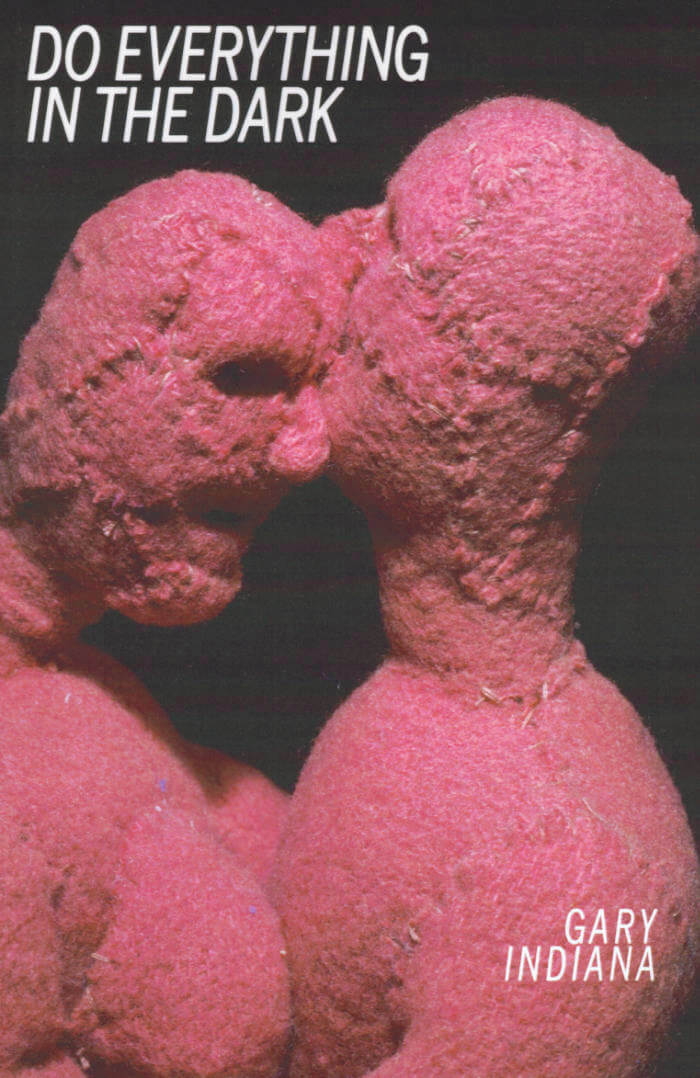
Do Everything in the Dark
Faced with photos of a once-tumultuous New York art world, the narrator's mind in this scathing, darkly funny novel begins to erupt. Memories jostle for center stage, just as those that they are about always did. These brilliant but broken survivors of the '80s and '90s have now reached the brink of middle age and are facing the challenge of continuing to feel authentic.
Luminous with imagery, cackling with bitter humor, this roman à clef spares no one. It's a canny portrait of one era's vaporization, and a study of the perpetual need that some of us feel to reconstruct ourselves-atom by atom.
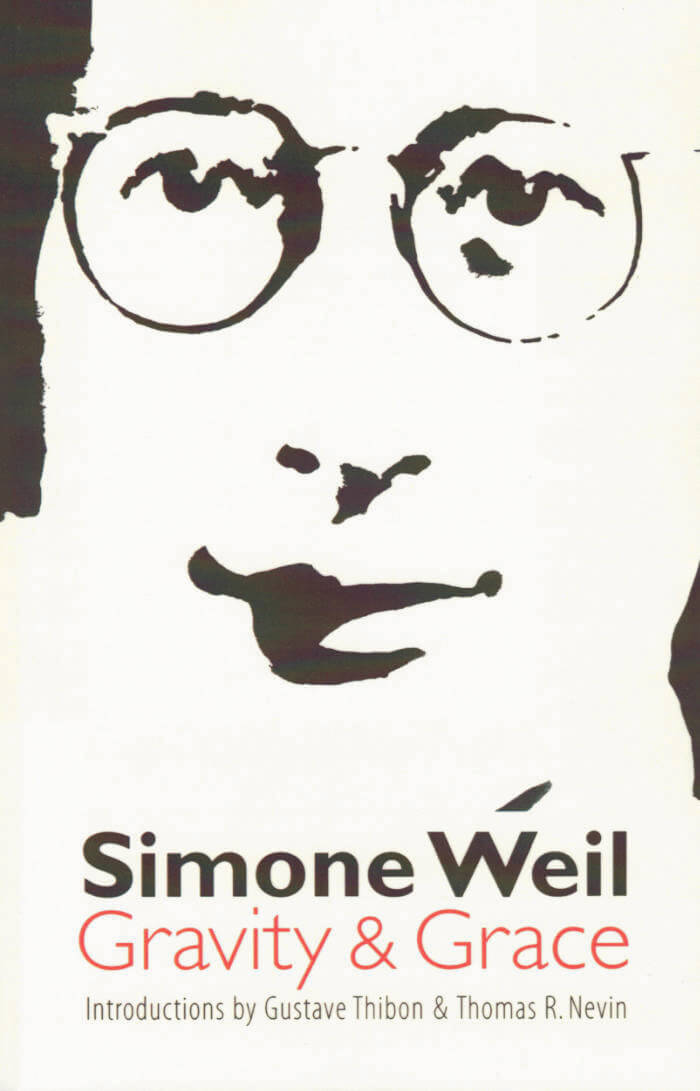
Gravity And Grace
Simone Weil, the French philosopher, political activist, and religious mystic, was little known when she died young in 1943. Four years later the philosopher-farmer Gustave Thibon compiled La pesanteur et la grbce from the notebooks she left in his keeping.
In 1952 this English translation accelerated the fame and influence of Simone Weil. The striking aphorisms in Gravity and Grace reflect the religious philosophy of Weil's last years. Written at the onset of World War II, when her health was deteriorating and her left-wing social activism was giving way to spiritual introspection, this masterwork makes clear why critics have called Simone Weil "a great soul who might have become a saint" and "the Outsider as saint, in an age of alienation." Introducer Thomas R. Nevin is a professor of classical studies at John Carroll University and the author of Simone Weil: Portrait of a Self-Exiled Jew.
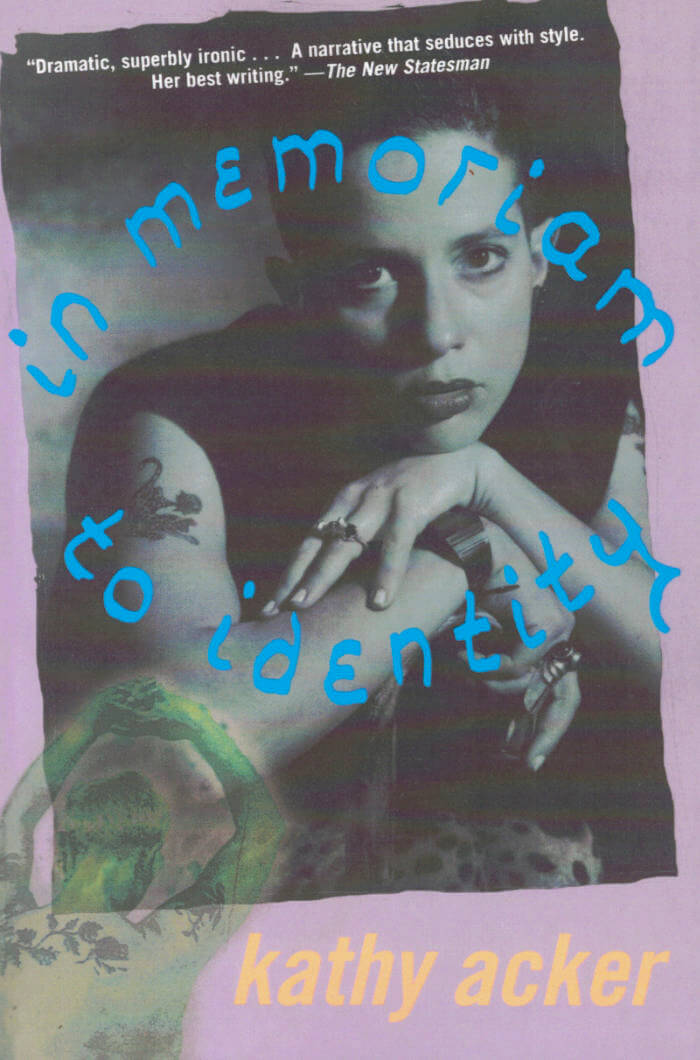
In Memoriam to Identity
In this characteristically sexy, daring, and hyperliterate novel, Kathy Acker interweaves the stories of three characters who share the same tragic flaw: a predilection for doomed, obsessive love. Rimbaud, the delinquent symbolist prodigy, is deserted by his lover Verlaine time and time again. Airplane takes a job dancing at Fun City, the seventh tier of the sex industry, in order to support her good-for-nothing boyfriend. And Capitol feels alive only when she's having sex with her brother, Quentin. In Memoriam to Identity is at once a revelatory addition to, and an irreverent critique of, the literature of decadence and self-destruction.
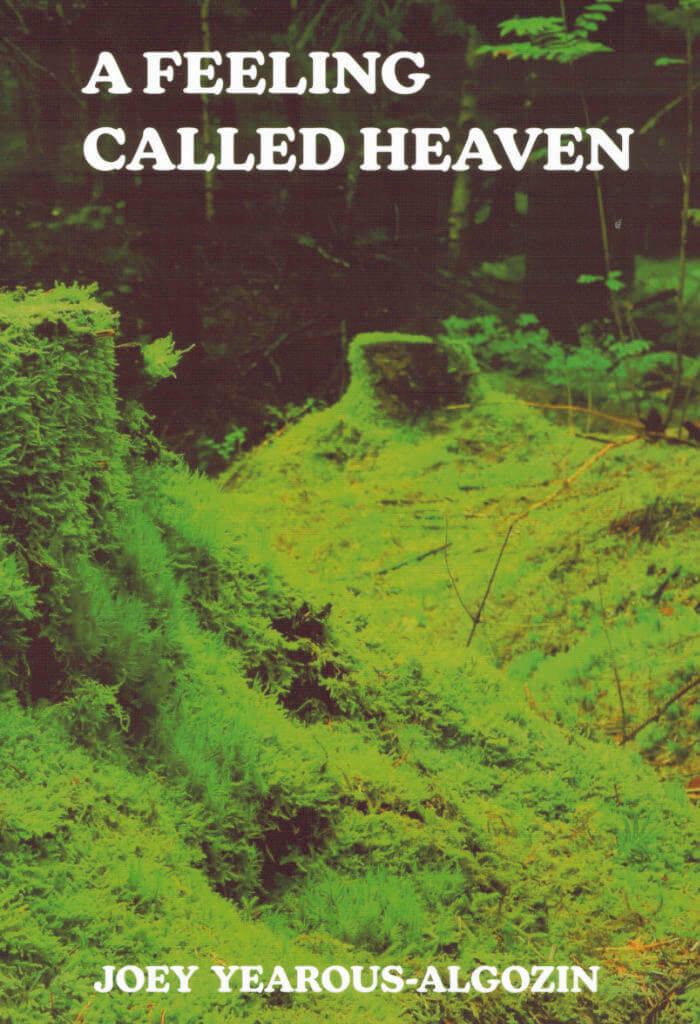
A Feeling Called Heaven
Adopting the role of a death doula or New Age religious leader, and drawing inspiration from the Theater of the Absurd, author Yearous-Algozin prompts readers to accept the already occurring end time. A Feeling Called Heaven oscillates between grief and humor as it imagines the nonhuman world that will grow from the ruins of this one, cultivating a sense of presence and intimacy with the inevitable destruction of our global environment.
Yearous-Algozin is the author of over 20 texts/files including Utopia (2016); Caller Removed (2016); Air the Trees (2012); and the multi-volume work, The Lazarus Project (2010-2013). With Holly Melgard he has co-authored a trilogy of texts: Liqudation (2017), White Trash (2014) and Holly Melgard's Friends and Family (2014). His poetry, poetics, and criticism have appeared in BOMB Magazine, Convolutions, Dreamboat, A Perfect Vacuum, and Social Text, among others. His work has been performed and/or installed at the Museum of Contemporary Art (MoCA), the Museum of Modern Art (MoMA), and The Graphische Sammlung ETH Zürich. Yearous-Algozin is a founding member of the Troll Thread publishing collective and a former co-editor of P-QUEUE (2010-2013). He earned a PhD from the State University of New York at Buffalo and now teaches at Baruch College.
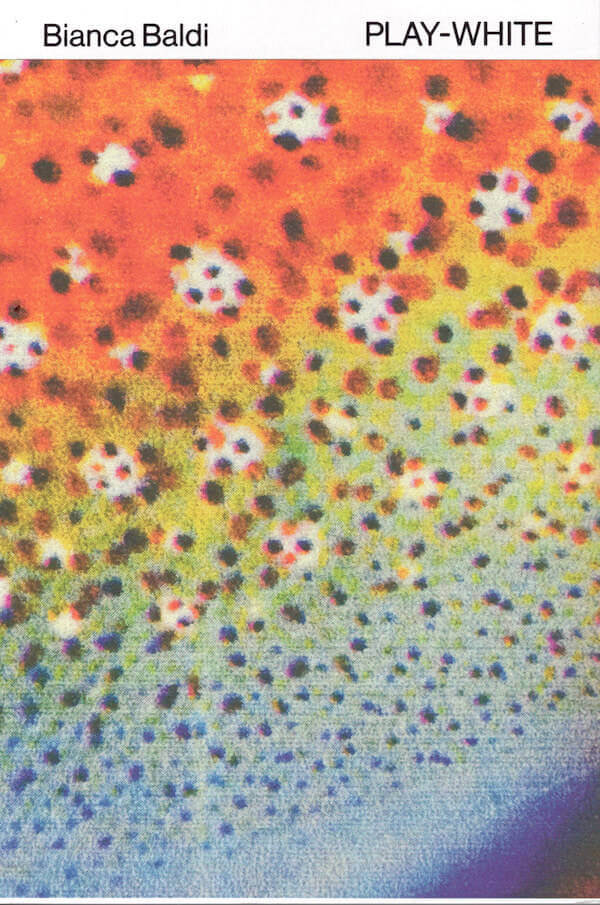
Play-White
The racist term "play-white" comes from the apartheid era, when it connoted a black or mixed race person who lived as a white person: “So and so is a play-white.” South African artist Bianca Baldi draws from studies of biomimicry and her own family history, as well as literary precedents—such as Nella Larsen’s novel Passing (1929)—to reflect on racial passing and the instability of racial identities. Play-White alternates between layers of visualization and moments of discretion in order to explore questions of presence and evasion beyond their representation in black and white.
With contributions by Bianca Baldi, Mika Conradie, Shoniqua Roach, Amy Watson, and others; design by Katharina Tauer & Wolfgang Hückel in collaboration with K. Verlag.
Published 2021